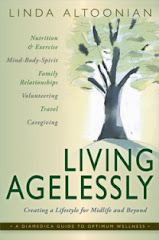I've just had the pleasure of three weeks in Switzerland and New England where the temperatures didn't rise above 75. It was heaven. I've gotten home to Texas and temperatures range between 102-105. To say it is hot is an understatement. It feels far more like the opposite destination of heaven.
I guess I've not acclimated yet because as I was trying to do some gardening, I felt a little overwhelmed even though I was doing it in the morning and thought I had hydrated enough before. When I started to research about what might be happening, I found some interesting information about the difference between heat stress and heat stroke. I thought I'd pass it on.
The Risk of Heat Stress
Your risk of heat stress depends on many things. These include:
•Your physical condition
•The weather (temperature, humidity)
•How much clothing you have on
•How fast you must move or how much weight you must lift
•If you are near a fan or there is a breeze
•If you are in the sun.
Too much heat can make you tired, hurt your job performance, and increase your chance of injury. You can get skin rash. You can also get:
•Dehydration. When your body loses water, you can’t cool off fast enough. You feel thirsty and weak.
•Cramps. You can get muscle cramps from the heat even after you leave work.
•Heat exhaustion. You feel tired, nauseous, headachy, and giddy (dizzy and silly). Your skin is damp and looks muddy or flushed. You may faint.
•Heat stroke. You may have hot dry skin and a high temperature. Or you may feel confused. You may have convulsions or become unconscious. Heat stroke can kill you unless you get emergency medical help.
Judy Hedding in her article "How To Recognize, Treat and Avoid Heat Stroke" suggests the following.
1.If someone's body temperature reaches 105 degrees, they could have heat stroke.
2.If a person has heat stroke, the person probably isn't sweating much.
3.With heat stroke, the skin will be hot and red.
4.The person may be dizzy or nauseous.
5.If a person has heat stroke, his/her pulse may be rapid.
6.Immediately call a doctor.
7.Get the person out of the sun.
8.Take off the person's outer clothing.
9.Apply cool water or apply cold packs to the person's body to lower the temperature.
10.If the person is conscious, provide small sips of salt water.
11.Do not give any drugs, alcohol or caffeine to the person.
12.To prevent heat stroke, wear light, loose fitting clothes and a hat in the sun.
13.Drink a lot of water (even if you don't feel thirsty) to prevent heat stroke.
14.To prevent heat stroke, take in a little more salt than usual with meals. This helps retain water.
15.If you are out in the heat walking, hiking or playing sports, make sure you carry a phone with you. Never hike or play golf alone during the heat of the summer.
Tips:
1.Understand the difference between heat exhaustion and heat stroke. The first aid is different for each.
2.Do not ever leave a child or a pet in your car in the spring or summer. Not even for a minute. Not even with the windows open.
3.Every year children and pets die in cars.
My suggestion for when it is over 100 degrees is to make a tall glass of iced tea, put your feet up and pass the time in an airconditioned room. Whatever work you have outside can wait until the temperature drops a bit.
Stay cool. Your life may depend on it.
Saturday, July 16, 2011
Subscribe to:
Post Comments (Atom)


No comments:
Post a Comment